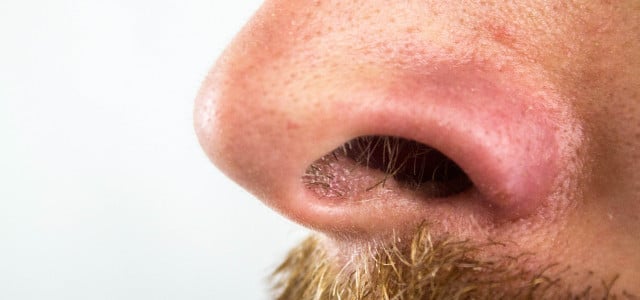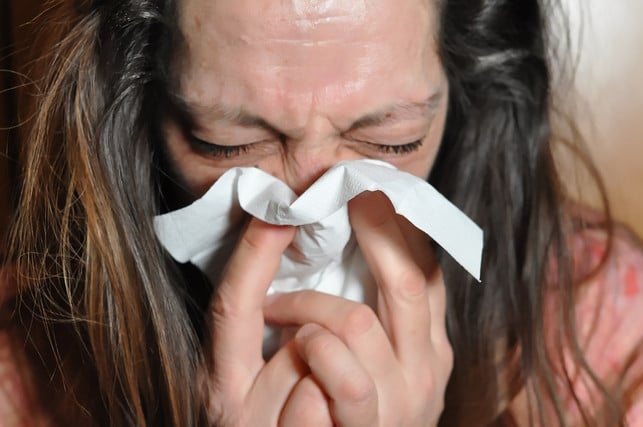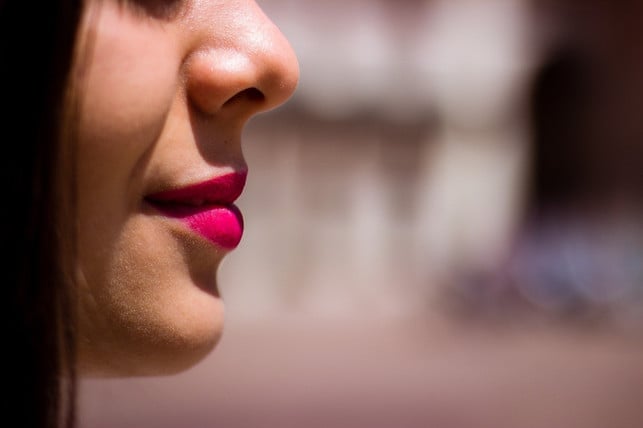
Pimples on the nose are usually very painful and annoying. Read here how you can recognize them, where they come from and how best to treat them.
Pimples and blackheads mainly occur in the so-called T-zone of the face, i.e. on the chin, nose and forehead. Since a particularly large amount of sebum is produced in these areas, skin impurities increasingly form there.
But sometimes the annoying skin irritations find their way to more unusual places – for example, pimples can appear on the nose. The nostrils in particular are often affected by small pustules. Often they are not only annoying, but often extremely painful.
Causes of pimples on the nose

(Photo: CC0 / Pixabay / renateko)
The causes of pimples on the nose are no different from those of pimples on other parts of the body. They occur when the skin produces excessive sebum. This causes the gland outlets to become blocked and can become red, festering and sometimes inflamed.
There can be various reasons why the skin produces more sebum. As a rule, it is due to fluctuations in the hormonal balance, a genetic predisposition or an incorrect diet. Pimples can also be a sign that you are not caring for your own skin – for example, if you use care products that are too rich.
The nose is particularly vulnerable if you touch it often with dirty fingers, have very dry nasal mucosa, or have just had a cold. This can then lead to a bacterial nasal infection and this can also lead to pimples on or in the nose.
Treat pimples on nose

(Photo: CC0 / Pixabay / albertoadan)
First, an important piece of information: Small, painful skin irritations in the nose can be more than just pimples. A herpes sore or nasal boil would also be conceivable.
- A nasal boil occurs when a hair root in the nose becomes inflamed. Initially the area around the affected hair is red, but as it progresses a painful red nodule develops. It can grow up to two centimeters and ends up being filled with pus. Since nasal boils also affect deeper layers of skin, you should definitely have them examined by a doctor. A boil usually has to be treated with antibiotics because the bacteria involved can be very dangerous if they get into the bloodstream.
- If you are affected by nasal herpes, the affected area will soon begin to tingle, itch and burn. The resulting blisters are painful and filled with a clear fluid. You should definitely not touch cold sores with your fingers, otherwise you will spread the virus all over your face. In this case, too, it is best to consult a doctor to be on the safe side. Caution: Herpes viruses are highly contagious and should not come into contact with other people or objects.
-
You can recognize pimples on the nose because they are red, have a spot of pus and may hurt when touched. In this case it is also very important that you don’t push it yourself. You’re just making it worse. Instead, you should keep your nasal mucosa moist, for example by inhaling with hot water. Normally the pimple disappears on its own. If you’re worried that there’s something else going on, there’s no harm in visiting your doctor.
Important: No matter what skin irritation you find in your nose, you should force yourself not to press on it – even if it’s difficult. If the area becomes inflamed and bacteria gets into the blood, you risk serious infections.
Read more on Techzle\.com:
- Pimples on the scalp: causes and what helps against them
- Skin types: How to determine your type and care for it properly
- Thistle oil: effect and application for the kitchen, skin and hair
Edited by Jennifer Watzek
** marked with ** or orange underlined Links to sources of supply are partly partner links: If you buy here, you are actively supporting Techzle\.com, because we then receive a small part of the sales proceeds. More info.